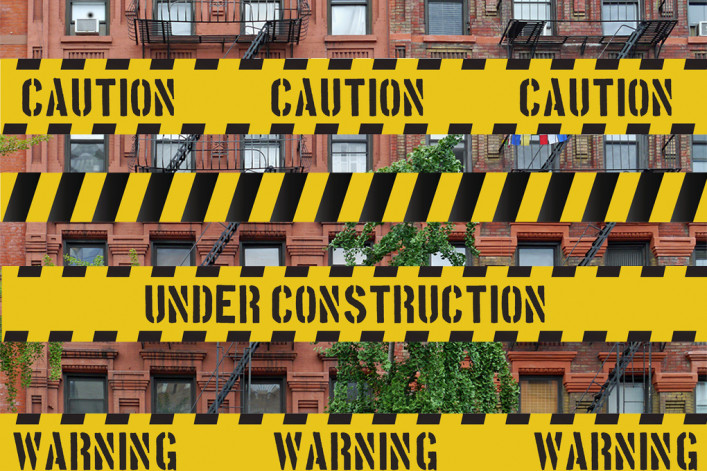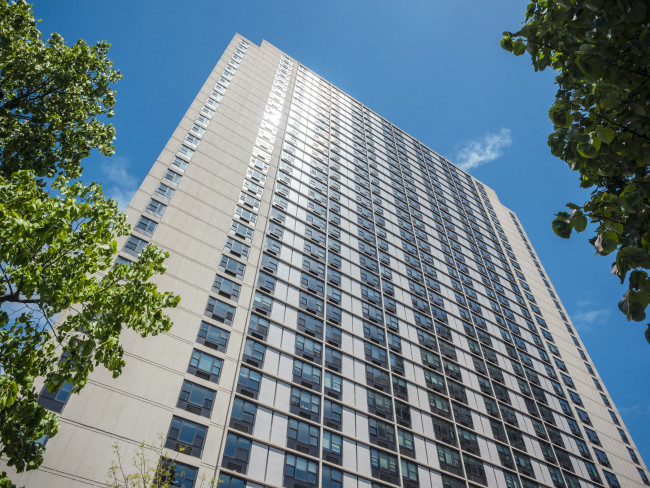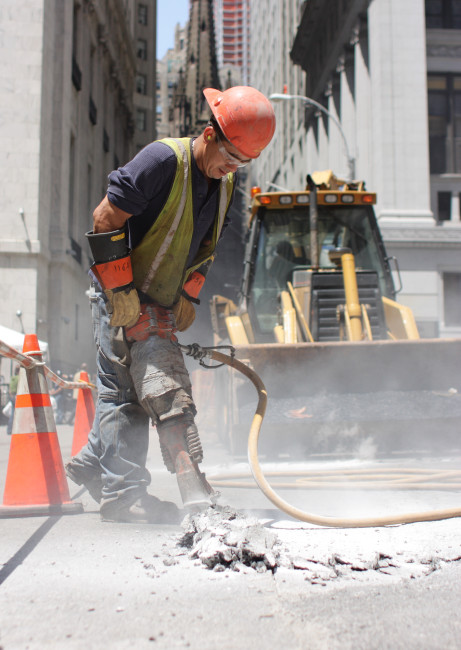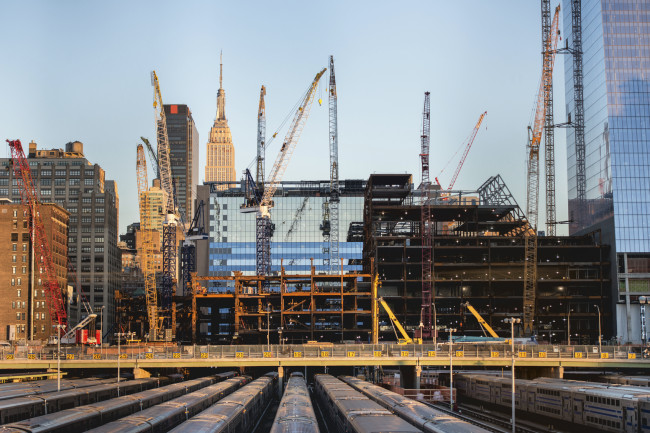The 7 worst places to live in a building

Every apartment has its potential drawbacks, but when it comes to the likelihood of leaks, structural issues, or noisy disruptions, some units in any given building will be more troublesome than others. And few have a better bird’s-eye view of the skeletons lurking inside New York City’s apartment buildings than the architects and property engineers called in to diagnose problems.
**An earlier version of this story ran in 2011, and was updated with new information in March 2017.**
To harness that knowledge for the greater good, we spoke to a few NYC architects about which locations in apartment buildings present the most risk to health, home, pocketbook and/or peace of mind. Plan your next purchase accordingly:
1. Directly below a roof or a setback terrace
Even in a new construction building, if your apartment is underneath the roof deck or one of your neighbors' terraces, leaks are more or less inevitable. What's worse, the source of the problem can be hard to pinpoint, as it often isn't directly visible (for instance, aging interior pipes may be a culprit). "It can take months or even years," says RAND Engineering & Architecture’s Peter Varsalona.
Sometimes, however, the problem is more straightforward. "Recently, a contractor was refinishing an illegal deck [in a building I was working in], and they attached it by screwing it into the roof, which created holes below," says Alan Berman of Archetype Design Studio. "If you're below anyone's terrace or roof, you're in line to have problems if they do any work on it."
If you're below the rooftop pool, that could spell trouble (Berman once had a client who lived on the top floor underneath the pool, which, he says, "flooded his apartment twice"), and on the less extreme side of things, if your building utilizes a rooftop water tank, you may be facing diminished water pressure compared to your downstairs neighbors. These rely on gravity to create water pressure, and thus, your pressure will improve on lower floors as it gains more momentum on its way down from the roof. "If you're on the floor right below the tank, you don't necessarily get as good water pressure as the floors below you," explains Berman.
One more thing to keep in mind here: noise disturbances from neighbors chatting and walking directly above you. To cut down on the sound of footsteps from above, says Varsalona, “you want to at least see pavers—squares of pre-cast concrete 1 ½ or 1 ¾ inches thick—on top of pedestals, and even with that, I’ve had clients who can still hear footfalls and voices, too, if the windows are open.”
2. Next to an elevator shaft
Though living right next to the elevator will be convenient when you're leaving the house in a hurry or arriving laden with bags, Varsalona warns that clients sometimes complain of vibrations from the elevator shaft, as well as noise from the rattling of the cables. And more noise pollution can arrive in the form of loud chatter among residents waiting for the elevator.
"Everyone stands outside the elevator and talks, so you're constantly hearing your neighbors' conversations," says architect Kimberly Peck. (And on the flip side, having neighbors outside your apartment all the time raises the likelihood that they'll hear any noise or conversation emanating from your apartment.)
That said, the amount of noise created by elevators varies by building, so you'll want to investigate in person and suss it out for yourself. In other words, this isn't the best location to pick if you're buying pre-construction.
3. Next to the compactor shaft
While you won't hear as many neighbors making chit-chat near the trash compactor, much like the elevator shaft, living next door could mean dealing with vibrations. That and, depending on the layout of the trash chute, the sound of the door slamming shut, and trash descending into the building's basement.
"I’ve had new buildings where residents complain they hear refuse as it falls down the shaft, so that is another kind of annoyance," says Varsalona. "Especially the resident that drops that one bottle down the compactor shaft in the middle of the night and you listen to it go all the way down."
4. The lobby, first floor, or next door to a community room
While they can often be a relative bargain, apartments on the ground floor have a reputation for problems, ranging from safety concerns to lack of light and privacy, to streetnoise and to an increased risk of pest infestation. "In some of the older buildings, you'll find apartments that are right off the lobby, and those tend to be super noisy," says Peck.
On the upper floors, you could face similar noise pollution if you live near a community room or playroom that can attract extra foot traffic and noise. "Usually those spaces are in the cellar, but in new condos they can be on the second floor or higher," Varsalona notes.
And besides potential security concerns on the lower level (a ground-floor apartment is easier to break into than a penthouse, after all), Peck notes that in some buildings, you could be dealing with extra noise and odor pollution on the street level, as well. This is particularly true if your apartment is located right above the building's cellar or garage. “You certainly don’t want to be above a garage, where cars idle pumping out fumes," says Varsalona. "What people tend to complain of are gassy smells. It can get really bad. And though it's odorless, carbon monoxide is always a worry."
Bottom line: Unless your ground floor apartment is reasonably far from the lobby—and located above an empty basement or storage room—proceed with caution.
5. Along an exterior airshaft
While having a window facing an air shaft can be perfectly pleasant (and even downright peaceful), with this one, you'll want to do some research into who else is using the space—and potentially venting into it. "Sometimes there is an exterior airshaft or mechanical shaftway that allows the apartment to satisfy the light and air requirements for bedrooms," says Varsalona. "But you really have to look at the neighboring buildings sharing the shaft, because they’re not all residential. It might be a Chinese food restaurant dumping whatever into the shaftway next to you."
Take it from the experience of one Brick editor whose shower window shared an air shaft with a fried chicken restaurant: You do not want your only source of light and fresh air to be shared with any kind of business that utilizes a deep fryer.
6. Adjacent to a mechanical room
Depending on the building, the mechanical room could be in the basement—and therefore something you find yourself living on top of—or it could be located on a higher floor, or even the roof. In newer buildings (which have moved mechanicals off the floor to minimize potential damage during floods), it will likely be one of the latter.
"[Mechanical rooms] house boilers, air conditioning equipment, pumps—all kinds of devices that can generate noise, heat, and/or vibrations," says Varsalona. Again, this is a case where it's best to investigate in person to see how dramatic (or nominal) the effects might be. Perhaps the noise is minimal, but on the flip side, if you live above a boiler on the ground floor, the apartment could become hotter than usual—and you may be loathe to open the windows and let in street-level sounds and smells.
7. Directly next to the staircase
Consider this one the walk-up equivalent of living right next to the elevator. While you'll be conveniently placed if you're leaving in a hurry, you'll also likely be treated to the rumbling footsteps and conversations of your neighbors as they come and go.
"You see this in a lot of East Village and West Village walk-ups," says Peck. "In older walk-ups with wood stair frames, any time anyone goes up and down the stairs, you really hear it, and your apartment is shaking. The stairs are literally attached to the structure, so any kind of movement moves you."
"And it's not just when they're directly passing your apartment," adds Peck. "It's all the way from the top of the stairwell to the bottom." For this reason, says Peck, some clients opt to put in soundproofing for the walls in their apartment that are adjacent to the stairwell.
Of course, this all leads to a natural follow-up question: Is there any good place to live in an apartment building? Well, sort of.
Peck recommends the end of a long hallway in a big building to minimize noise from other residents, and Varsalona says "somwhere in the middle but at least two or three floors below the roof."
Still, as Berman bluntly puts it, "there is no safe place. Manage your expectations." This is not to sour you on apartment living altogether, but simply to prepare you for the potential extra costs or hassles that may come up over the course of your ownership. "That's why you're required by most buildings to get insurance—things happen," says Berman. It's also a good idea to have an architect come with you to scope out a potential new purpose and identify any potential future issues.
"At the end of the day, we're all stacked on top of each other," says Peck. And while this will come with certain social and structural hassles, consider it the tradeoff for not having to deal with the upkeep of a suburban home. And for the pleasure of a New York City address.
You Might Also Like






























